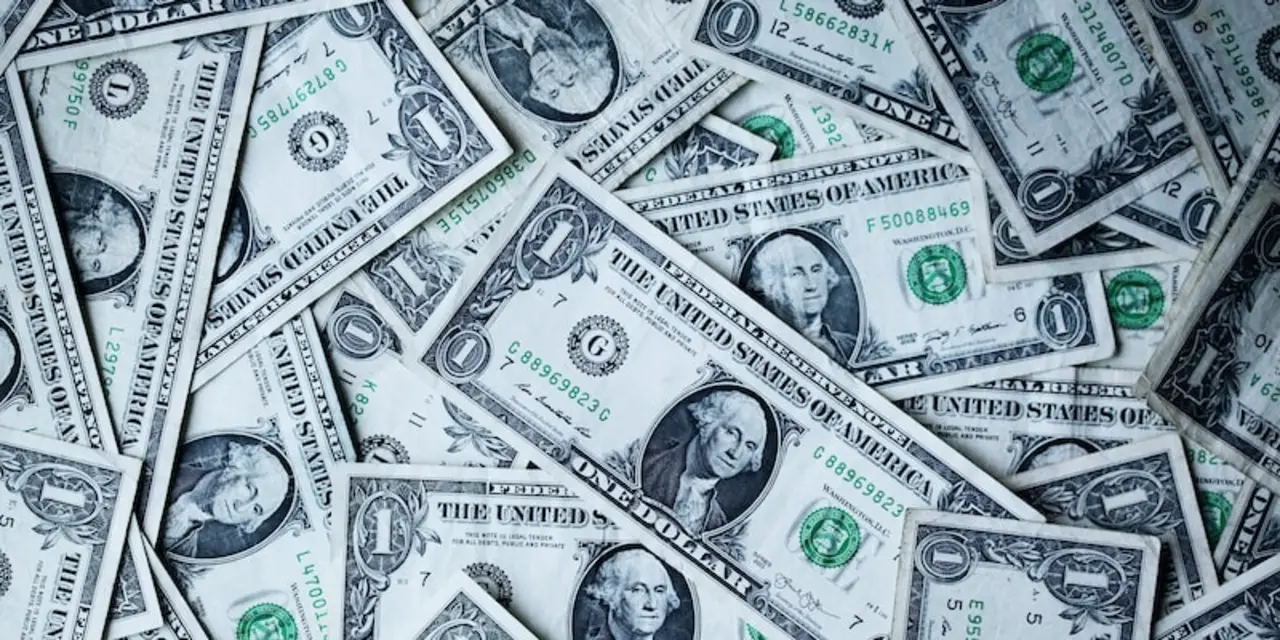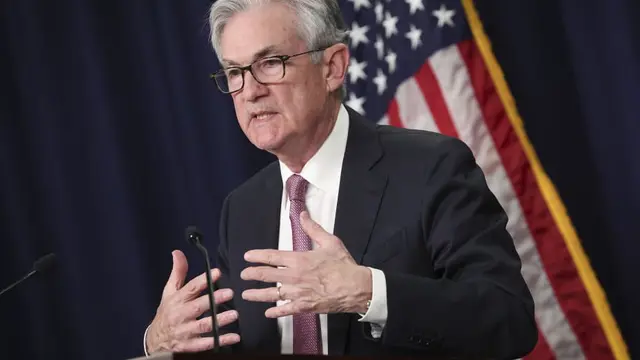Analyzing the Impact of President Trump's Economic Policies
It has been almost four years since President Donald Trump took office and began implementing his economic policies. Since then, the U.S. economy has seen some significant changes. But is it true that Trump has helped make the economy better? Let's take a look at the evidence and analyze the impact of Trump's economic policies.
Tax Cuts and Jobs Act
One of the first major economic policies implemented by President Trump was the Tax Cuts and Jobs Act of 2017. This legislation significantly reduced taxes for corporations and wealthy individuals, while also introducing a number of other changes. Supporters of the legislation argued that it would boost economic growth by incentivizing businesses to invest and hire more workers. However, critics argued that the benefits would mainly benefit the wealthy, while doing little to help the middle class.
In the two years since the Tax Cuts and Jobs Act was passed, the U.S. economy has seen some positive results. GDP growth has been consistently above 3%, unemployment has reached record lows, and wages have been increasing. This suggests that the tax cuts may have had a positive impact on the economy. However, it is difficult to say for sure since other economic policies have also been implemented during this time.
Trade Policies
Another major economic policy implemented by President Trump has been his trade policies. Trump has implemented a number of tariffs on imported goods, which has led to an increase in prices for consumers. He has also renegotiated trade deals with countries like China and Canada, which has resulted in some economic benefits for the U.S. economy. However, there have also been some negative effects, such as increased uncertainty for businesses and reduced global trade.
Overall, it is difficult to say whether President Trump's trade policies have had a positive or negative impact on the economy. While some industries have seen benefits from the tariffs, others have experienced increased costs and reduced demand for their products. In the long run, it is possible that the trade policies may have a positive effect on the economy, but it is too early to tell.
Conclusion
When analyzing the impact of President Trump's economic policies, it is clear that there have been both positive and negative effects. On the one hand, the Tax Cuts and Jobs Act has likely had a positive impact on the economy, while his trade policies have had a more mixed effect. Ultimately, it is difficult to say whether or not Trump has helped make the economy better, as the long-term effects of his policies still remain to be seen.
Examining the Evidence: Is Trump's Economy Really Better?
President Donald Trump and his supporters claim that his election has helped the U.S. economy. But is this really the case? To answer this question, it's important to look at the evidence to see if Trump's economic policies have had a significant effect on economic growth in the United States.
First, let's look at unemployment. Trump's supporters have pointed to the decline in the unemployment rate since his election as proof of his success. However, the decline in unemployment began before Trump took office, so it's unclear how much responsibility he can take for this decline. In addition, the decline has been slower under Trump than it was under President Barack Obama.
Next, let's look at GDP growth. Trump has touted his tax cuts as a major driver of economic growth, but the actual impact of the tax cuts on GDP growth has been relatively small. GDP growth has been relatively strong under Trump, but it has also been strong under other presidents, and it's unclear how much of the growth can be attributed to Trump's policies.
Finally, let's look at wages. Trump's supporters have argued that his policies have led to wage growth, but wage growth has been relatively slow under Trump compared to other presidents. In fact, wage growth has actually slowed in some sectors since Trump took office.
Overall, it's difficult to draw any definitive conclusions about Trump's impact on the economy. There have been some positive signs, such as the decline in unemployment and the strong GDP growth, but there have also been some negative signs, such as the slow wage growth. Ultimately, it's up to the reader to decide whether Trump has helped or hurt the economy.
Exploring the Pros and Cons of Trump's Economic Policies
Since his election in 2016, President Donald Trump has made several changes to economic policies in the United States. His administration has proposed new tax policies, created new trade agreements, and altered existing regulations. But is the President's economic policy helping or hurting the US economy? In this article, we'll explore the pros and cons of Trump's economic policies.
Pros
The Trump administration claims that its economic policies have created a robust economy with low unemployment and strong economic growth. Since the President took office, the US economy has grown at a steady pace. His tax cuts and deregulation have made it easier for businesses to operate and have encouraged more investment. Additionally, the administration's trade policies have encouraged more exports and allowed businesses to access global markets.
Cons
Critics of the President's economic policy argue that it has created an unsustainable economic bubble. They point to the increasing national debt and the record-high stock market as evidence of a potential economic crisis. Additionally, some argue that the President's policies have primarily benefited the wealthy and large corporations, leaving behind those in the middle and lower classes.
Conclusion
President Trump's economic policies have certainly had an impact on the US economy. Whether that impact is positive or negative has been the source of much debate. While the President's supporters point to the economic growth and low unemployment, his critics point to the increasing national debt and the benefits that have primarily gone to the wealthy. Ultimately, only time will tell if the President's economic policies will have a lasting effect.
An In-Depth Look at How Trump's Policies Have Affected the Economy
Since Donald Trump was elected President of the United States, he has implemented several policies that have had a direct effect on the economy. In this article, we will take a deep dive into the impacts of his policies on the US economy and its citizens.
Tax Cuts
One of the most significant economic policies that Trump has implemented has been the 2017 Tax Cuts and Jobs Act. This act sought to reduce taxes for individuals, corporations, and pass-through entities. In the end, around 80% of Americans received a tax cut in 2018.
While the tax cuts have been beneficial for individual Americans and businesses, there has been some concern about the long-term impact of the cuts on the US economy. One worry is that the cuts are reducing the government’s ability to fund important programs and services. Additionally, some experts are concerned that the tax cuts are increasing the national debt, which could lead to a sluggish economy in the future.
Trade Deals
Trump has also sought to renegotiate several trade deals that the US had with other countries. This includes the North American Free Trade Agreement (NAFTA) and the Trans-Pacific Partnership (TPP). While Donald Trump has argued that these renegotiations are beneficial for American businesses and workers, some economists have argued that they may have a negative effect on the US economy in the long run.
For example, the renegotiations of NAFTA have led to an increase in tariffs between the US and Canada and Mexico. This has led to higher prices for goods and services and decreased demand for US exports. Additionally, some experts argue that the renegotiation could lead to an increase in unemployment, as the higher tariffs could lead to a decrease in trade between the US and its two largest trading partners.
Inflation
Trump’s policies have also had an effect on the rate of inflation in the US. The rate of inflation has risen since Trump took office, due to a combination of factors such as tax cuts, an increase in government spending, and the tariffs that have been imposed on imports. This has led to higher prices for goods and services and a decrease in the purchasing power of the US dollar.
While some economists argue that a moderate rate of inflation can be beneficial for the economy, an increase in the rate of inflation could have a number of negative effects. These include a decrease in consumer spending, an increase in the cost of living, and a decrease in the purchasing power of the US dollar.
Conclusion
In conclusion, Donald Trump’s policies have had a significant effect on the US economy. While some of his policies, such as the Tax Cuts and Jobs Act, have had a positive effect on the economy, others, such as the renegotiation of NAFTA and the imposition of tariffs, have had a negative effect. Additionally, his policies have had an effect on the rate of inflation, which could lead to a decrease in consumer spending and a decrease in the purchasing power of the US dollar. As such, it is important to keep an eye on the effects of Trump’s policies on the US economy in the near future.
Examining the Impact of Trump's Tax Cuts on the Economy
Donald Trump's time as president of the United States has been defined by his controversial tax cuts. Trump has championed the Tax Cuts and Jobs Act of 2017 as a major achievement of his administration, claiming that it has spurred economic growth. But is this true? In this article, we'll take a look at the impact of Trump's tax cuts on the US economy.
The Tax Cuts and Jobs Act of 2017
The Tax Cuts and Jobs Act of 2017 was signed into law by President Donald Trump in December 2017. The act lowered the corporate tax rate from 35% to 21%. It also provided for a number of other tax cuts for individuals, including reducing the top income tax rate from 39.6% to 37%.
The Impact of the Tax Cuts
The tax cuts have had a mixed impact on the US economy. On the one hand, proponents of the tax cuts argue that they have spurred economic growth and job creation. They point to the fact that the US economy has grown steadily over the past two years, with the unemployment rate falling to a 50-year low of 3.5%.
However, critics of the tax cuts point out that much of the growth in the economy has been driven by government spending, rather than by any growth spurred by the tax cuts. They also argue that the tax cuts have unfairly benefited the wealthy, while doing little to help middle- and low-income earners. They point to the fact that inequality has increased since the tax cuts were implemented.
Conclusion
In conclusion, it is difficult to say whether Trump's tax cuts have had a positive or negative impact on the US economy. While the tax cuts have led to some economic growth, this growth has been largely driven by government spending rather than by any increase in private investment spurred by the tax cuts. In addition, the tax cuts have disproportionately benefited the wealthy, while doing little to help middle- and low-income earners.


